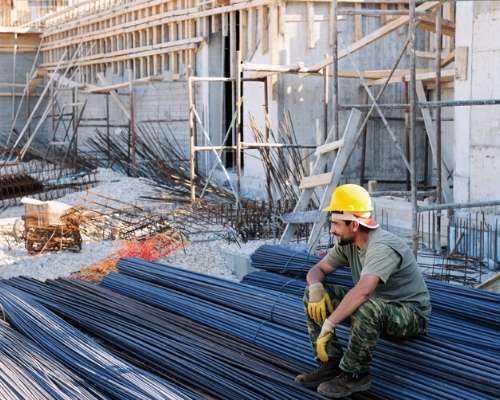6 Minute Read
January 18, 2023
0%

It’s an all-too-familiar story in the construction industry: An already complex and demanding project that involves multiple teams and subcontractors hits a wall as payments for materials, services or work done are slow to be made. As the general contractor or owner struggles to pull together all data on job progress, invoices, materials, equipment and labor from multiple sources so that accounting teams can pay the bills, the project stalls. Instead of teams in the field fluidly moving onto the next stages, they’re resending invoices and other documents, checking boxes and following up with countless email chains and phone calls.
Because of construction projects’ complexity, there has long been a general expectation of delayed payments, as the payment chains can be equally as complex. A traditional lack of real-time data and workflows in the industry means that many processes—including payments to subcontractors and suppliers—can take days, weeks, even months to accurately facilitate.
The construction billing and pay chains also have a trickle down effect. Many contractors and subcontractors are paid as work is completed, meaning that oftentimes they’re self-financing their own work against the contractual promise of agreed upon payments. If timely billings and payments are not being made, or if there are conflicts over work that was done, general contractors can see work stoppages; subcontractors can take hits to cash flow that might prevent them from continuing work; and crew members in the field might not receive timely paychecks.

Unlike other industries, where these pay chain issues could cause serious backlash, the construction industry has—to some degree—accepted late payments as part of the cost of doing business. According to a 2022 Construction Payments Report from Rabbet, 37% of all respondents surveyed reported that they endured work stoppages or project delays over the past year due to delayed payments to crew members, which cost $208 billion in productivity for the industry.
The payment and productivity relationship is particularly important considering the value of 2022's construction projects ($1.77 trillion), which have seen massive increases from 2020's $1.36 trillion total project value. According to the survey, general contractors spend an average of 44 hours per month managing payments to their subcontractors and vendors, and 62% of contractors have incurred billing or other financing charges over the last year as a result of their construction billing issues.
"In the construction industry, business expenses are incurred and must often be paid before payments are received for work conducted," which makes the problem a difficult one to handle if cash flows are inconsistent. And typically, that money will leave a contractor (due to wages and material costs) much more quickly than the money will flow in, so it's no surprise that nearly half of contractors (49%) say they've had to wait more than 30 days to receive payment at times during 2022.

There have been efforts made to speed along processes. Some subcontractors or suppliers might send preliminary notices (sometimes called preliens, Notices to Owner or NTOs) to general contractors or owners in an attempt to increase visibility and provide evidence that they are attempting to stay on top of billing issues. Of course, every contractor wants their invoices prioritized, and in an ideal world, all would be paid on time and without hassle. However, with current processes that many contractors have in place, that’s easier said than done.
One way to ensure payments is to file a mechanics lien against the project. This essentially puts it on legal record that payment is due. However, doing so typically adds a layer of tension between subcontractors and general contractors and owners, and it still doesn’t guarantee that payments will be made quickly. Since COVID-19 caused construction upheaval in business disruptions, the number of mechanics liens are up 40%, Construction Dive noted in the early days of the pandemic. Additionally, 80% of contractors surveyed revealed that they spend a significant amount of time during the workweek pursuing payment.
The 2022 Construction Payments Report notes that three of the top causes of delays in construction projects have to do with workforce shortages, materials costs and concerns, and payments process issues. In a time where the next chapters of the construction industry’s business continuity story are still being written, having to worry about making timely payments while also getting paid on time themselves is one challenge contractors need to find a solution to quickly.

Furthermore, advanced data analytic tools, dashboards and reports and data visualizations included in the right integrated construction software suite allow contractors to both stay up to date with project health and spot potential issues long before they occur. And digitizing construction tasks and workflows removes manual processes like paper and layers of disjointed spreadsheets from the equation—reducing risks of errors or miscommunication by providing a uniform process for all.
Though the construction industry has historically been slow to adopt new technologies, the last few years has seen a significant push to modernize operations—with the idea of speeding up billing cycles and stabilizing cash flow seen as just one of many benefits. Those still resisting may have their hands forced soon—especially as the construction landscape changes in the wake of COVID-19, as many project owners are requiring modern tools and processes of the contractors they work with.
Not sure where to begin? Check out Viewpoint’s handy software buyers’ guides:
Or, simply connect with Viewpoint today to schedule your own personal demo.
6 Minute Read
January 18, 2023
2 Minute Read
December 5, 2019
4 Minute Read
March 21, 2019